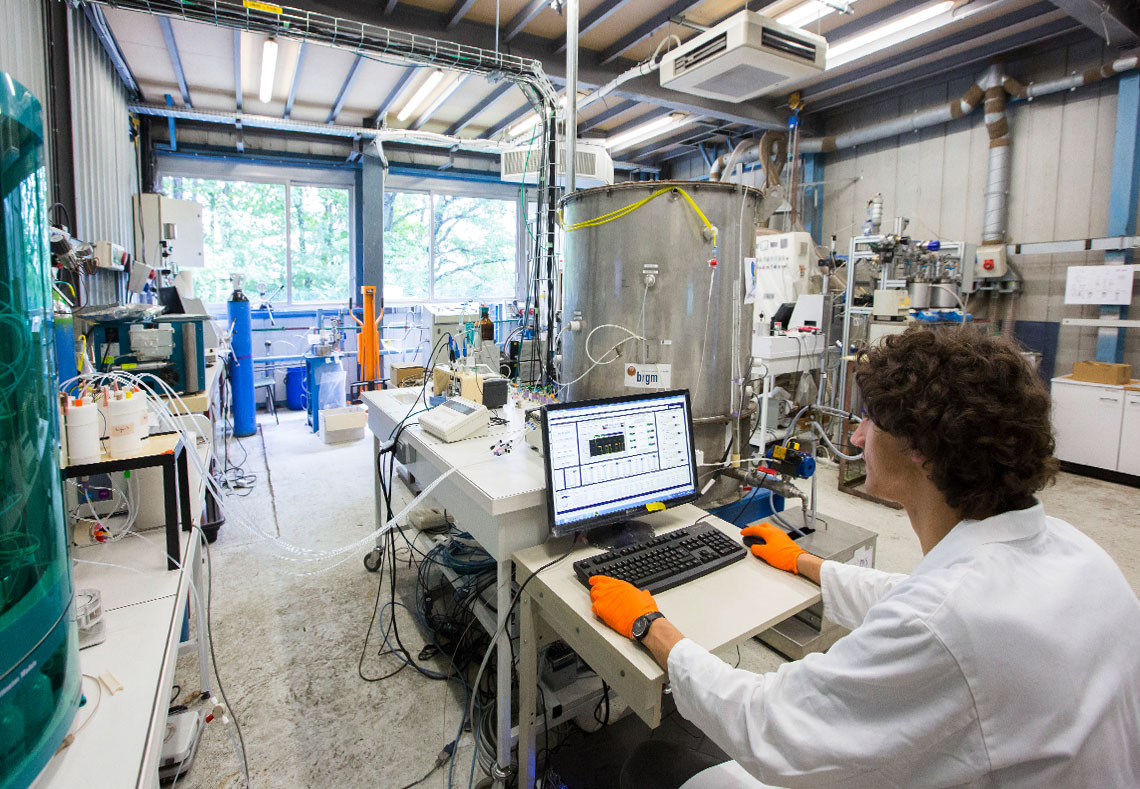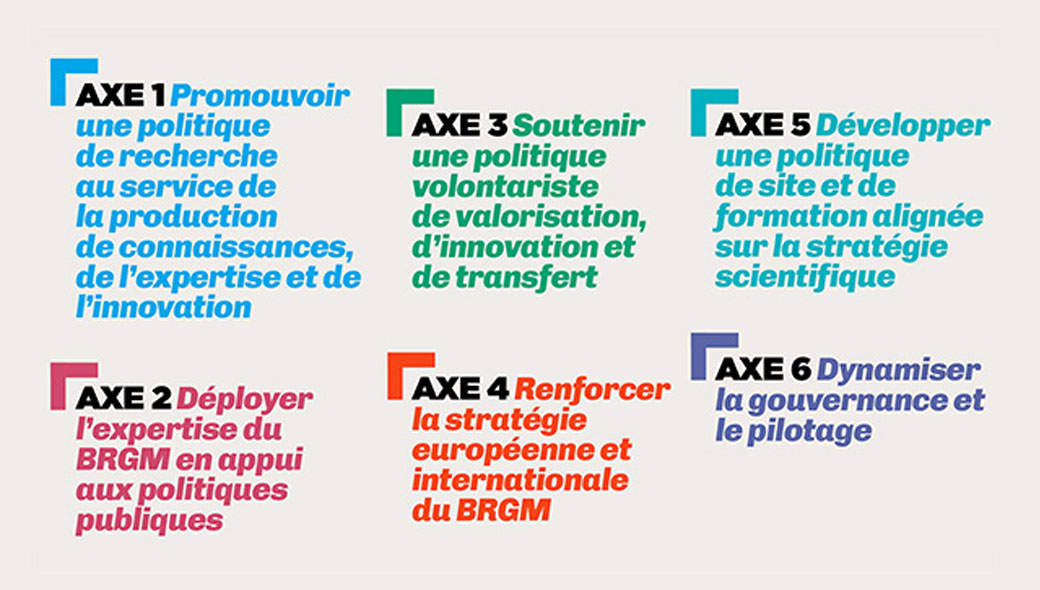A new scientific strategy
With the evaluation of BRGM by HCERES in 2017, followed by the implementation of the new objectives and performance contract (COP) for 2018-2022, BRGM has grasped the opportunity to review its positioning strategy and to identify key scientific orientations for the medium term, in collaboration with all staff. BRGM's work is structured around three pillars: research, expert studies and consultancy, and innovation. All of BRGM’s scientific activities have now been structured in accordance with its scientific strategy, which addresses six key issues of our time.

The objective is also to seamlessly coordinate its main scientific activities and to improve alignment between research and expert consultancy. Eight programmes were set up in early 2019 to work towards the different objectives of the scientific strategy.
A 10-year scientific strategy to address evolving challenges
BRGM's essential roles as the French geological survey organisation remain the same: producing and disseminating geoscientific knowledge, contributing to training and through research, helping to shape public policy grounded in science, developing technological innovation and promoting dialogue between science and society.
However, the challenges that need addressing have changed. Geoscience has to deal with global issues, including climate change and anthropogenic pressures, such as increasing urbanisation. This is leading to profound changes, with effects on the water cycle, more degraded soils and an increase in the use of natural resources. To address these changes, efforts are being made to transition to a green economy. All this raises questions about how BRGM can help tackle these global and societal issues, and the 10-year scientific strategy has been drawn up with this in mind.
The strategy is structured around six key challenges, which will now determine BRGM’s scientific investments.
Two challenges are cross-cutting and generic: continuing to improve geological knowledge of the subsurface and management of the geoscientific and environmental data cycle.
The other four challenges are of a more socio-economic nature: the role that the subsurface can play in the energy transition, efficient use of mineral materials in the circular economy, integrating land and subsurface risks to support regional spatial planning for more sustainable communities, and sustainable management of groundwater resources.
